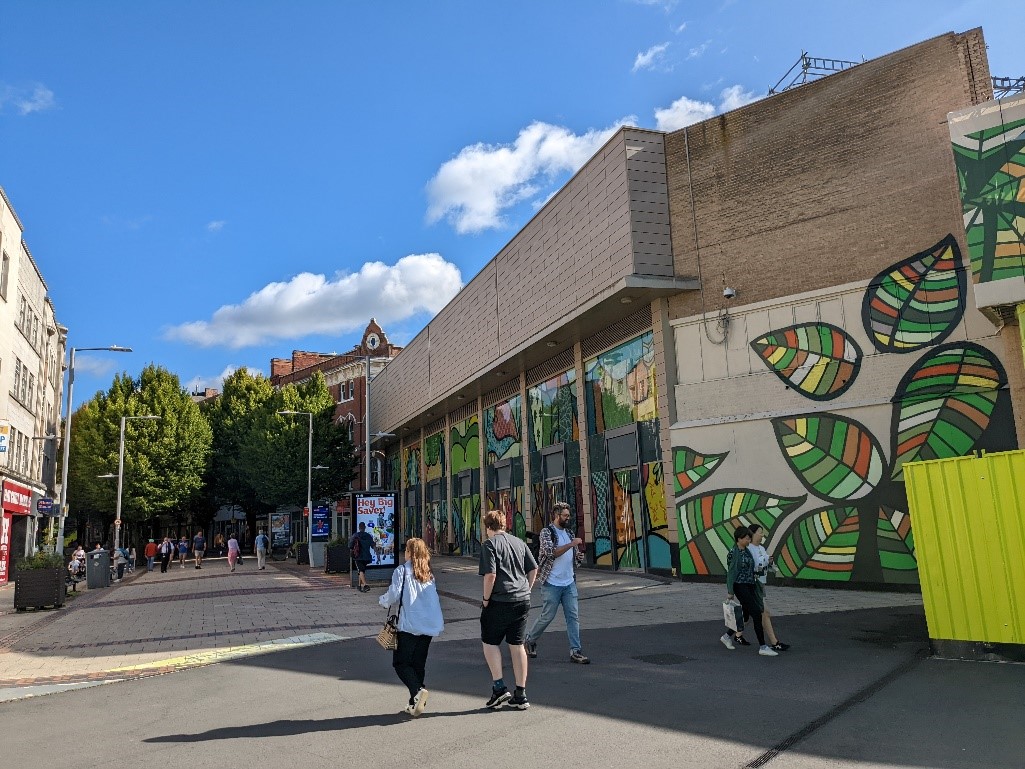
The greenest building is the one that’s already built.
Adaptive reuse in architecture is a sustainable approach to urban development. It can take many forms including full regeneration, part-reuse or a combination of restoration and new build. It involves repurposing existing buildings for new functions, thus preserving their historical and cultural significance while reducing the environmental impact associated with demolition and new construction.
As we look towards creating more sustainable building solutions for our towns and cities, we utilise new technologies to make the built environment as green as possible. The United Kingdom has a vast portfolio of buildings that are already in-situ in our towns and cities, often in prime locations with good links to transport and infrastructure. It may seem that regeneration projects and re-use of existing buildings is not the ‘glamourous’ side of architecture; but in reality – finding these buildings and injecting them with a new lease of life is what we should be doing in the first instance. Using an existing building as a canvas for design can lead to not only more sustainable methods of building but more innovative ones as well.
At Leonard Design we have extensive experience in working with clients to assess value in their portfolios and bring unused buildings back to life.
Leah’s Yard, Sheffield – Full Regeneration
The Leah’s Yard building has undergone a full revival as part of the Heart of Sheffield Masterplan. The Grade II listed collection of buildings house small former industrial workshops. The proposals create a destination for independent retail showcasing the finest makers and small businesses from local areas. Leonard Design worked in collaboration with Lathams Architects on the project. Structural and roof restoration work was undertaken to bring the building back to a condition where it can rejoin the City Centre and retain its place in history. Councillor Ben Miskell, chair of the transport, regeneration, and climate policy committee at Sheffield City Council, said of the scheme:
“We are thrilled to witness Leah’s Yard achieve this significant milestone. The redevelopment of this treasured heritage ensures that it will remain a focal point in our city centre for generations to come”.


Community Diagnostics Centre Nottingham – Reuse of existing Structure
The Community Diagnostics Centre in Nottingham City Centre re-uses the frame of a 1970’s shopping Centre. The centre was due for redevelopment in 2018 but the project stopped, leaving the dilapidated concrete structure in a state of partial demolition. Leonard Design worked with the Local NHS Health Care Trust to come up with a solution to re-use part of the centre’s existing frame to form the primary structure of a new health care facility. The frame will be clad in a new energy efficient envelope and internally, the space is fitted out to create a state-of-the-art health facility.
The location of the building in the heart of Nottingham City Centre means that the Community Diagnostics Centre has great access to public transport and amenities. The eye-catching design of the building creates a new landmark entry building to the city centre. This building will now act as the catalyst for further development of the rest of the structure, creating a new and exciting part of the city centre.


Laycock House, Sheffield, UK – Restoration of Existing Building & New Build
Laycock House is a regeneration scheme which elegantly knits the existing streetscape to the newer development plots. The building creates a juxtaposition of form which links an existing Victorian façade to the newer, large developments that form the Heart of Sheffield Masterplan. The project implemented a sensitive renovation of the residences in Laycock House, with retail at ground level. The adjacent new build was designed to enhance the building and the roof form, though contemporary in appearance has complimentary fenestration patterns to successfully link the old and new.


Considered design like this allows existing city centres to become part of the development history of a place rather than either competing with them or being left behind. At Leonard Design we look beyond development opportunity and see the potential in city centres through development, re-use, restoration, or a combination of all three most appropriate to the site.
Development is about more than just building, it is about bringing life back into our built environment through careful retention of what we already have, mixed-use developments combining new and old, and restoring the historical assets of our towns and cities so that they may become part of the story once more.
At Leonard Design we thrive on not only designing successful places to live, work and play but in injecting life back into our towns and cities through considered reuse and regeneration.
